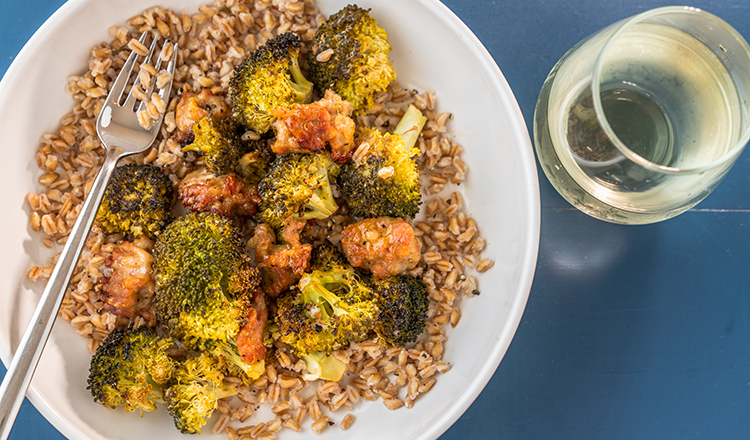Sometimes the simplest techniques reveal the biggest transformations. Take broccoli: raw, it’s crunchy and fresh; steamed, it’s tender and mild. But when you roast broccoli, the vegetable becomes something altogether different—deeply flavored, slightly crisp, and very crave-worthy.
Roasting works its magic by drawing out the natural sugars in broccoli and caramelizing them at high heat. Instead of a flat green flavor, you get nutty, toasty notes, and florets with browned, crisp edges that contrast beautifully with their tender stalks. It’s one of those side dishes that feels elevated but takes very little effort.
To get started, heat your oven to 425°F. Cut a head of broccoli into florets, making sure they’re similar in size for even cooking. Don’t forget the stems—they’re sweet and delicious when peeled and sliced thinly. Toss everything with a drizzle of olive oil, a sprinkle of salt, and a few grinds of black pepper. Spread the florets in a single layer on a baking sheet. Giving them space is important: if the pan is overcrowded, the broccoli will steam instead of roast.
Roast for 20–25 minutes, flipping once, until the edges are browned and crisp. At this stage, the broccoli is ready to serve as is, but this technique also invites endless variations. A squeeze of lemon juice right before serving brightens the flavors. Shaved Parmesan adds savory depth. Red pepper flakes give a little heat. Or toss the hot broccoli with garlic and breadcrumbs for an easy upgrade.
Roasted broccoli isn’t just a side dish—it can also be part of a larger meal. Toss it into pasta with olive oil and cheese, fold it into a grain bowl, or use it as a topping for flatbreads and pizzas. Leftovers are great stirred into scrambled eggs or blended into a roasted vegetable soup.
The beauty of roasting broccoli is that it turns an everyday vegetable into something that feels special without requiring advanced skills or a long list of ingredients. It’s a perfect example of how good technique elevates simple food—just the kind of lesson professional chefs know well, and one that home cooks can easily bring to their own kitchens.


